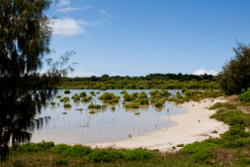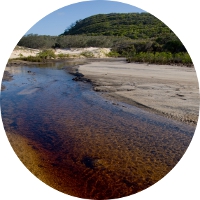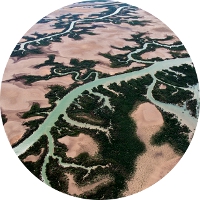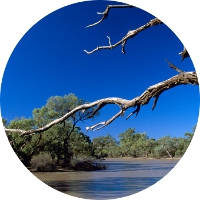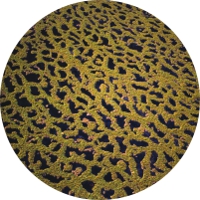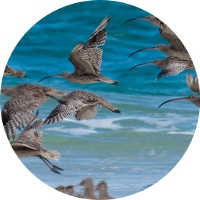|
|
Nationally (DIWA) and internationally important (Ramsar) wetlandsThe Convention on Wetlands of International Importance (known as the Ramsar Convention) was adopted in 1971 in the Iranian city of Ramsar. The convention aims to halt the worldwide loss of wetlands and to conserve remaining wetlands through wise use and careful management. The Ramsar Convention encourages the designation of sites containing representative, rare or unique wetlands, or wetlands that are important for conserving biological diversity. Australia was one of the first signatories. Quick facts
RamsarInternationally important wetlands can be nominated under the Ramsar Convention. There are 5 Ramsar sites listed in Queensland: As a signatory, Australia is required to develop descriptions of the ecological character for each site, maintain that character and notify the Convention of any changes. The documents can be used to:
Contracting parties to the convention are required to provide Ramsar Information Sheets (RIS) for all sites. Parties to the Convention also have a commitment to provide updated RIS information for all of their Ramsar sites at intervals of six years, or when there are any significant changes in the sites' ecological character. The RIS provides essential data on the Ramsar listed wetland, defines the boundary of the site and describes its ecological character under the Environment Protection and Biodiversity Conservation Act 1999. Get an overview of Queensland's Ramsar sites, including their Ramsar Information Sheets, using WetlandSummary. The roles and responsibilities relating to Ramsar sites are listed in Wetlands in Australia – roles and responsibilities - Fact sheet. Directory of Important Wetlands in Australia (DIWA)The Directory of Important Wetlands in Australia (DIWA) contains information about wetlands that have been assessed as meeting criteria for national importance. DIWA has some limitations including:
View a full list of Queensland's DIWA wetlands using WetlandSummary. The complete DIWA Third Edition is available for download. Wetland on-line education modules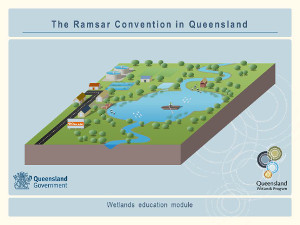 A series of on-line education modules, including the Ramsar Convention in Queensland, has been prepared as a resource for people who want to learn more about wetlands. Users can download and use the contents of this education module to meet their learning and training needs. This information should be used in conjunction with information found on this website. Additional information
Last updated: 25 January 2021 This page should be cited as: Department of Environment, Science and Innovation, Queensland (2021) Nationally (DIWA) and internationally important (Ramsar) wetlands , WetlandInfo website, accessed 8 May 2025. Available at: https://wetlandinfo.des.qld.gov.au/wetlands/management/national-international-important-wetlands/ |

 — Department of the Environment, Tourism, Science and Innovation
— Department of the Environment, Tourism, Science and Innovation

